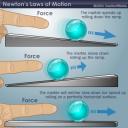The Science of Willpower Blog
Tuesday, April 13th, 2010 Check out Kelly McGonigal’s blog, Science of Willpower: Secretes for Self-Control without the Suffering. She is a mind-body psychologist and health educator at Standford. She teaches Psychology 205, a very popular course on the science of willpower.
Check out Kelly McGonigal’s blog, Science of Willpower: Secretes for Self-Control without the Suffering. She is a mind-body psychologist and health educator at Standford. She teaches Psychology 205, a very popular course on the science of willpower.
Her blog is filled with posts that should be of interest to cognitive designers working on problems in self-regulation and behavior change. Take for example the post, New Research Roundup on Contributing Factors in Obesity. She looks at three factors including:
This article by Olivia Judson details several recent studies showing how the body shuts down when you sit down. Sit at a desk all day, or watch three hours of TV at night, and it doesn’t even matter if you squeeze in an hour of exercise. A full hour! Every day! It’s not enough to counter the metabolic disaster of being sedentary the rest of the day. That’s right, even people trying to do the right thing have the deck stacked against them.
This has clear and novel implications for anyone designing obesity management programs.





